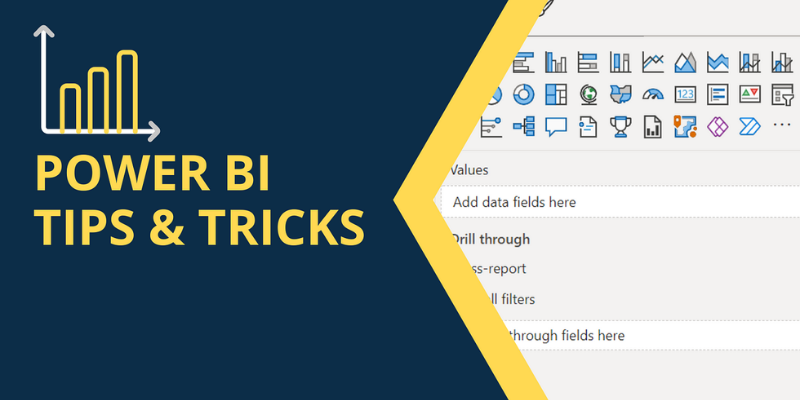Power BI is an exceptional business intelligence tool that is employed in enabling organizations transform data into insights. Nevertheless, as the reports or datasets get complicated, the problem of the performances can occur from time to time. Longer time taken to load the report, slower page movements, and slow rendering of possibly rich graphical features could lead to slow productivity. In this blog post, we will look at some strategies to follow to Improve the Performance in Power BI and improve the experience for users.
1. Efficient Data Modeling for Faster Performance:
Good data modelling is probably one of the best practices to have within Power BI in order to enhance performance. This means that depending on how you structure your data model, then this will determine the performance of the query. Here are some best practices for optimizing data models:
- Use Star Schema: Star schema makes it easier to handle the between tables making the query more manageable. This make the work of Power BI easier to process the data.
- Remove Unnecessary Columns: Generally, in a table, you should keep only the necessary columns. Do not tap information that is not needed in your coverage or your report.
- Aggregate Data: Rather than aggregating data for each query by the users, design tables that have summary data, to lessen the calculations required.
If you are a data analyst who wants to improve in the field of data modeling, then there can’t be a better way than enrolling in a Power BI Courses in Chennai. The course will give you adequate detail on how data modeling affects overall report performance.
2. Leverage DirectQuery and Data Refresh:
Power BI offers two primary data connectivity modes: Import and DirectQuery. Though, using DirectQuery is slower as data is from actual tables and not loaded into memory, it may be more suitable for large data importation or for use of real-time data.
- Use Import Mode for Faster Access: This is true, especially if the amounts of data to be imported are not massive. It is imperative that Power BI takes them into its memory. The performance benefits are huge because Power BI takes the data from the memory instead of the source.
- Leverage DirectQuery for Real-Time Data: However, if real-time reporting is an essence, then DirectQuery can be more effective. However, it can degrade report performance and hence requires query optimization and minimizing the amount of data extracted for real-time reporting.
Knowledge of when and how it is appropriate to employ these modes can have a major impact on the effectiveness of your Power BI reports.
3. Optimize Visualizations for Speed:
Power BI has a number of icons that are available for use in creating the representation of your data. It is worth stating here that although these visualizations assist in presenting the insights better, some of them can be very time consuming if their optimization procedures are not well done. Here are some tips to enhance visualization performance:
Limit the Number of Visuals: If more than one visual item is placed in a single report page, the page may take longer to load. It is advised to reduce the number of visuals possible or use headers if the number of tabs is too high.
Avoid Complex Visuals: Complex visuals, such as maps or custom visuals, look more professional, but they require more resources. Where possible, harness band visuals such as bar charts to tables and avoid the use of more complex graphics.
Use Aggregated Data: As indicated earlier, utilizing aggregated data in your visuals will cut down the time taken to process each such visual.
For enhanced knowledge on DAX optimization, attending Salesforce Training in Chennai will make one close the arising expertise on how to optimize the DAX formulas and queries.
4. Enable Query Folding
Query folding is the process by which certain queries are performed on the Data source server rather than in Power BI. This has the potential to enhance data refreshes and decrease the burden on Power BI.
For instance, when you use filters or sorting options, Power BI should always send these requests to the database to satisfy them. It was found that one way to significantly improve performance for a certain data source is to check that query folding is enabled for supported data sources where appropriate for large sets.
5. Reduce the Size of the Dataset
This implies that with a large data set, it will take Power BI a relatively long time to load data and perform analysis. Another tip is to try to shrink the data set down by removing some unneeded rows or columns during the data import.
Apply Filters During Data Import: Instead of calling all data from a source, use filters which cut down the data for the analysis to only what is necessary.
Use Incremental Refresh: For huge data sets, incremental refresh enables Power BI to update only the changed data, not the entire data set. This feature is helpful mainly for data warehouses and big transactional databases.
It can be said that optimizing work and reaction speed of Power BI is very important to avoid negative impacts on users’ usage of this tool. This article teaches seven basic steps to improve Power BI performance: data modeling, data connectivity mode, visualization, query folding, and data set size. Using these pointers can speed up your report, increase productivity, and bring value to your BI projects.
Whether you are new to Power BI and building your first reports, or have been using it for some time now and want to enhance the current reports, these tips can go a long way. Power BI’s full function is in its real-time capabilities, and with various improvements made within this software, you can get a lot more mileage from it.





